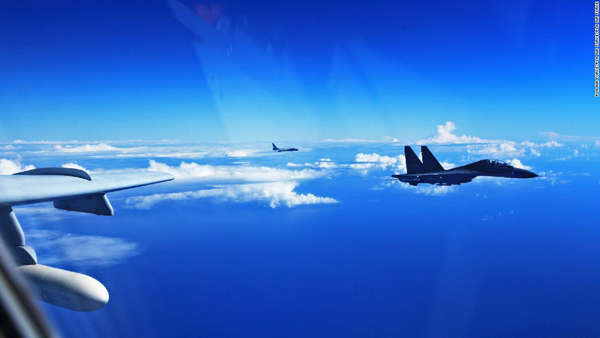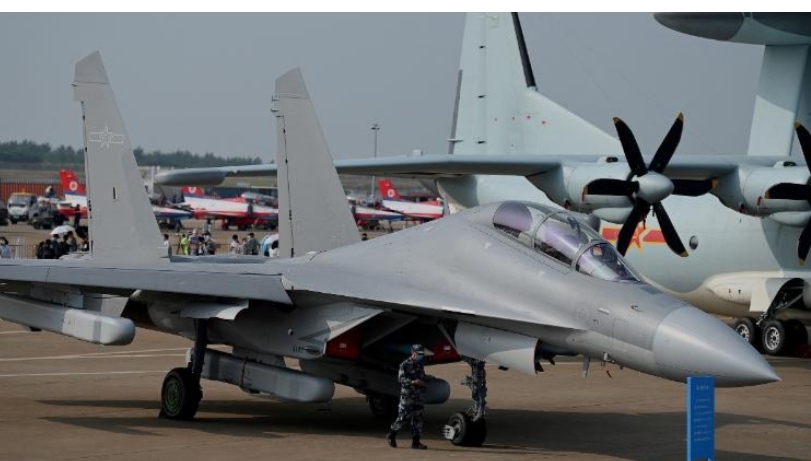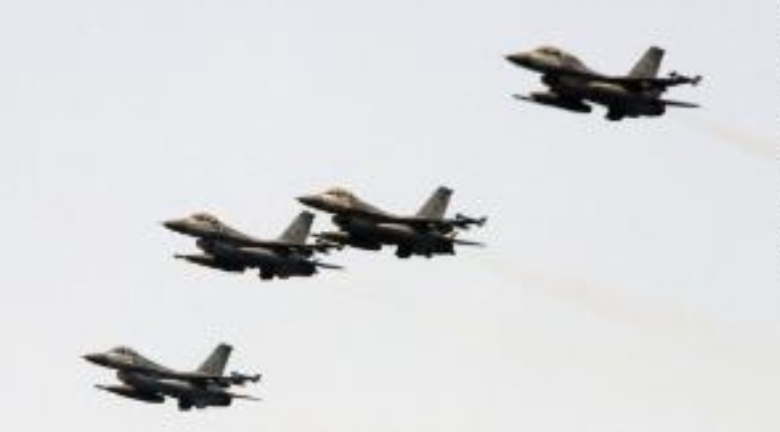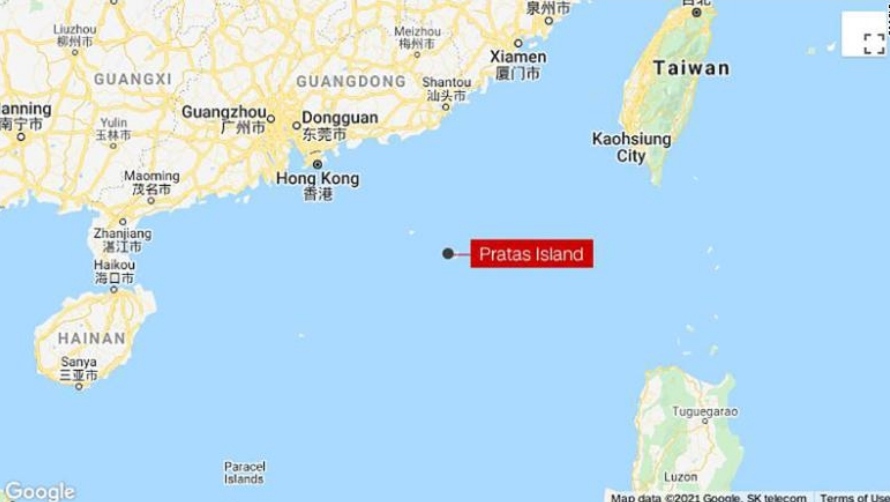China sends 77 warplanes into Taiwan defense zone over two days, Taipei says

By Eric Cheung and Brad Lendon
Taiwan has reported a record number of incursions by Chinese warplanes into its air defense identification zone (ADIZ) for the second day in a row, Taiwan’s Ministry of National Defense said on Saturday night.
The self-governing island said a total of 39 Chinese military aircraft entered the ADIZ on Saturday, one more than the 38 planes it spotted on Friday.
The 38 and 39 planes respectively are the highest number of incursions Taiwan has reported in a day since it began publicly reporting such activities last year.
The incursions on Saturday came in two batches — 20 planes during daytime hours and 19 planes at night, the ministry said in two statements. They were made by 26 J-16 fighter jets, 10 Su-30 fighter jets, two Y-8 anti-submarine warning aircraft and one KJ-500 airborne early warning and control plane, the Defense Ministry said.
20 PLA aircraft (J-16*14, SU-30*4 and Y-8 ASW*2) entered #Taiwan‘s southwest ADIZ on October 2, 2021. Please check our official website for more information: https://t.co/ga0zLOIC4d pic.twitter.com/SA59EdkJW5
— 國防部 Ministry of National Defense, R.O.C. ?? (@MoNDefense) October 2, 2021
In response to the incursions, the Taiwanese air force scrambled aircraft, issued radio warnings, and deployed air defense missiles systems, the ministry added.
Maps provided by the Taiwan Defense Ministry showed all of the Chinese flights on Saturday were in the extreme southwestern part of the island’s ADIZ.
19 PLA aircraft (J-16*12, SU-30*6 and KJ-500 AEW&C) entered #Taiwan‘s southwest ADIZ on the night of October 2, 2021. Please check our official website for more information: https://t.co/Vl6bWi8Cem pic.twitter.com/6IK77Bd3wY
— 國防部 Ministry of National Defense, R.O.C. ?? (@MoNDefense) October 2, 2021
The incursions did not violate Taiwan’s airspace, which extends 12 nautical miles from its coast. The US Federal Aviation Administration defines an ADIZ as “a designated area of airspace over land or water within which a country requires the immediate and positive identification, location and air traffic control of aircraft in the interest of the country’s national security.”
Enter your email to sign up for CNN’s “Meanwhile in China” Newsletter.
Before the past two days, the previous single-day record for People’s Liberation Army (PLA) flights into Taiwan’s ADIZ was in June, when 28 Chinese military planes entered.

A Chinese J-16 multirole strike fighter for the People’s Liberation Army Air Force (PLAAF) is shown at the 13th China International Aviation and Aerospace Exhibition in Zhuhai on September 28.
The incursions on Friday came as Beijing celebrated 72 years since the founding of the People’s Republic of China in 1949.
Taiwan and mainland China have been governed separately since the end of a civil war more than seven decades ago, in which the defeated Nationalists fled to Taipei.
However, Beijing views Taiwan as an inseparable part of its territory — even though the Chinese Communist Party has never governed the democratic island of about 24 million people.
Chinese President Xi Jinping has refused to rule out military force to capture Taiwan if necessary.
In the past, analysts have said the PLA’s flights likely serve several purposes for China, both demonstrating the strength of the PLA to a domestic audience and giving the Chinese military intelligence and skills it would need in any potential conflict involving Taiwan.

Taiwan plans to spend $1.4 billion on new fighter jets amid rising China military activity
“Xi Jinping has instructed the PLA to heighten its readiness and prepare for warfighting under ‘realistic fighting conditions.’ Hence, it is relatively unsurprising that the PLA continues to fly into Taiwan’s ADIZ as part of realistic training and preparation for armed conflict,” Derek Grossman, a senior defense analyst at the RAND Corporation policy think tank, told CNN on Saturday.
Despite the increase in PLA flights and the harsh rhetoric, Grossman doesn’t think combat is imminent.
“I don’t think there is a high or even medium probability of a Chinese attack or invasion of Taiwan,” he told CNN.
“The PLA still has many vulnerabilities, especially when faced with the near-certain intervention of the United States with possibly — probably? — Japanese and Australian support,” he added. “China understands the severe downsides of a failed attack or invasion of Taiwan and will probably continue to bide its time.”
But any intended message from Beijing may not be about the main island of Taiwan, other analysts say.

The maps provided by Taiwan’s Defense Ministry show the PLA Air Force flights are coming in the vicinity of Pratas Island, which sits at the top of the South China Sea and is actually closer to Hong Kong than Taiwan.
This island has no permanent residents but is home to a small Taiwanese military contingent and has an airstrip. Analysts note it is flat and would be difficult to defend.
“China could take control of the Pratas Islands whenever Chinese President Xi Jinping decides,” Yoshiyuki Ogasawara, a professor at Tokyo University of Foreign Studies wrote on The Diplomat in December.
“The islands are a potential flashpoint that now need to come to the attention of the US, Japan and other democratic countries,” Ogasawara wrote.




